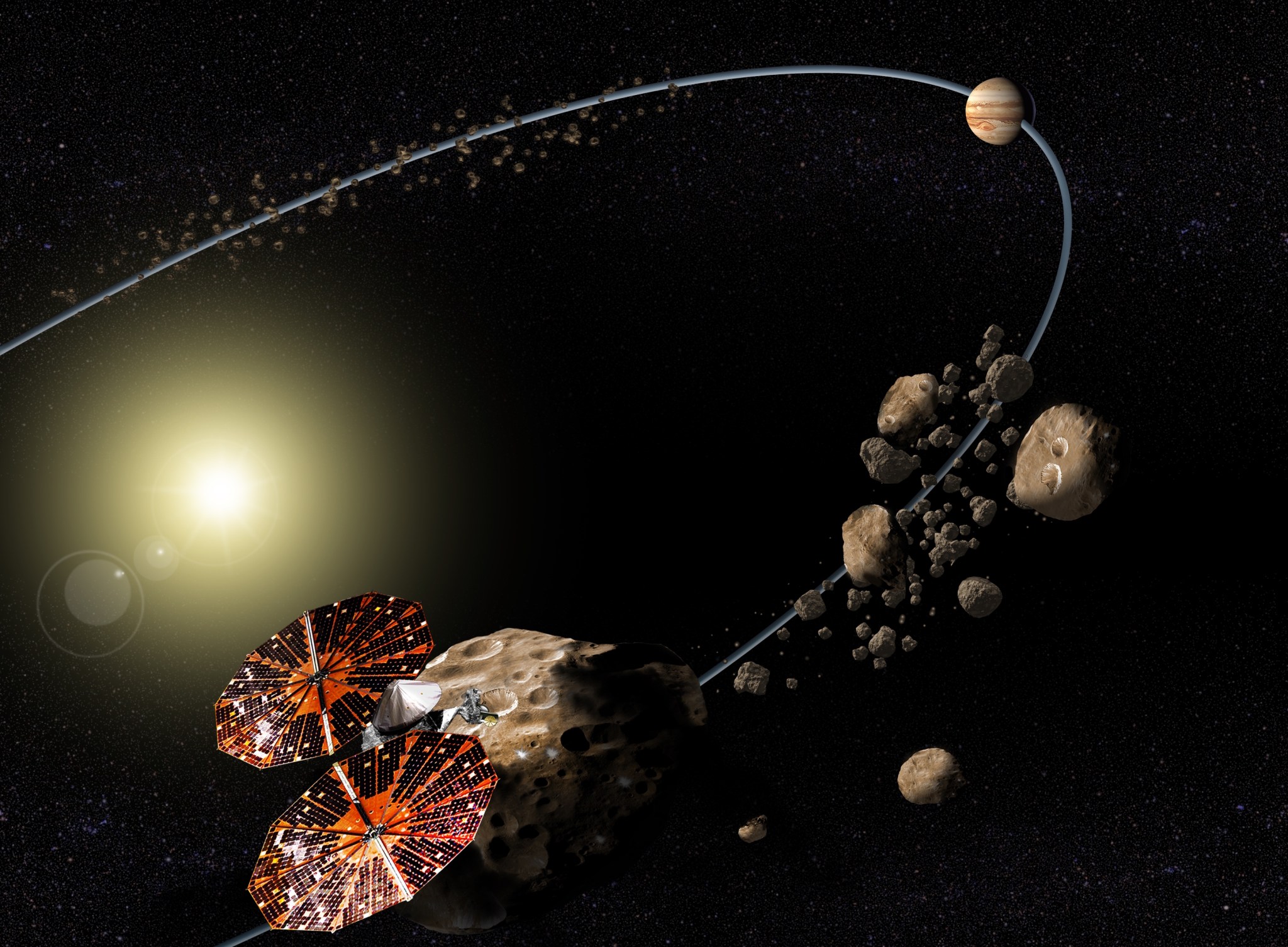NASA’s mission to perform the first reconnaissance of the Trojans, a population of primitive asteroids orbiting in tandem with Jupiter, passed a critical milestone today. NASA has given approval for the implementation and 2021 launch of the Lucy spacecraft.
The confirmation review, formally known as “Key Decision Point C,” authorized continuation of the project into the development phase and set its cost and schedule. The confirmation review panel approved the detailed plans, instrument suite, budget and risk factor analysis for the spacecraft.
The next major mission milestone, the Critical Design Review, will examine the detailed Lucy system design. After a successful critical design review, the project team will assemble the spacecraft and its instruments.
“Up until now this mission has entirely been on paper,” said Lucy Principal Investigator Hal Levison of the Southwest Research Institute at Boulder, Colorado. “Now we have the go ahead to actually cut metal and start putting this spacecraft together.”
Lucy, the first space mission to study the Trojans, takes its name from the fossilized human ancestor called “Lucy” by her discoverers whose skeleton provided unique insight into humanity’s evolution. Likewise, the Lucy mission will revolutionize our knowledge of planetary origins and the formation of the solar system.
Lucy is planned for launch October 2021. During its 12-year journey, the spacecraft will visit seven different asteroids – a Main Belt asteroid and six Trojans. The spacecraft and a remote-sensing instrument suite will study the geology, surface composition, and bulk physical properties of these bodies at close range.
“Today’s confirmation of Lucy is a key step towards better understanding the role that small bodies played in the formation of the Solar System and life on Earth,” said Adriana Ocampo, Lucy’s program executive at NASA Headquarters in Washington, DC. “We congratulate the entire team for their hard work.”
Southwest Research Institute (SwRI) in Boulder, Colorado is the principal investigator institution and will lead the science investigation. NASA’s Goddard Space Flight Center in Greenbelt, Maryland, will provide overall mission management, systems engineering and safety and mission assurance. Lockheed Martin Space Systems in Denver, Colorado, will build the spacecraft. Instruments will be built by Goddard, the Johns Hopkins Applied Physics Laboratory in Laurel, Maryland, and Arizona State University in Tempe.
For more information on the Lucy mission, refer to:
and
By Nancy Neal Jones
NASA’s Goddard Space Flight Center in Greenbelt, Md.
301-286-0039
nancy.n.jones@nasa.gov





























